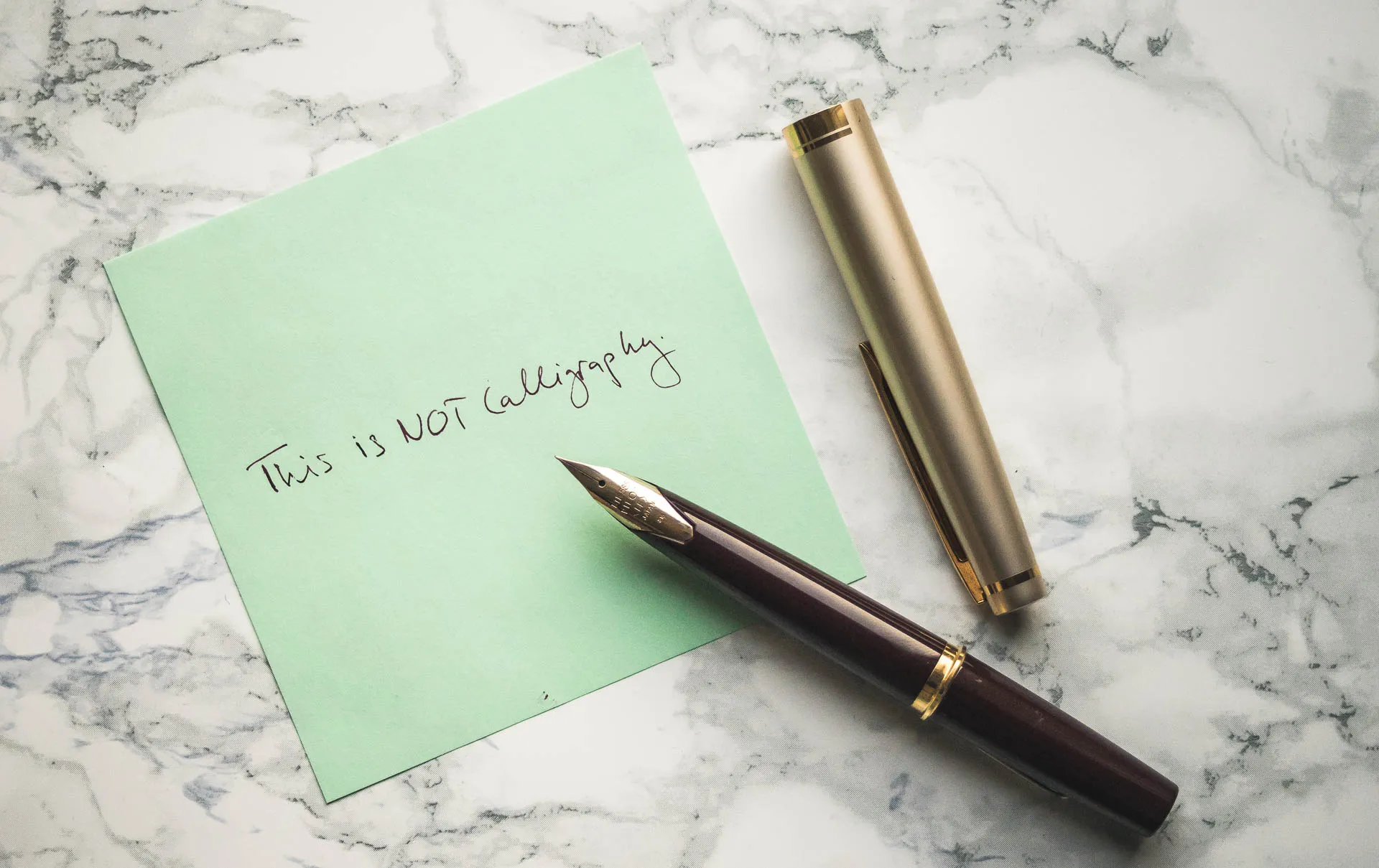Words are confusing, especially when it comes to those “mushy” terms where no one is really sure what they actually mean. You guys know I am crazy about research, you know I love to write, I also am a gigantic word-fanatic so this is a subject I have been spending a lot of time with. I get the question whenever I make a comment about the fact that I am bad at Hand Lettering and prefer Calligraphy.
So then I try to break it down, try to explain it as shortly as possible but – hell I write novels for a reason. I have a hard time cutting myself short. But let’s just look at those words and see how successful I am at keeping it reasonably compact today.

Font
FontLet’s start with the easiest distinction. Fonts. A lot of people ask me what “font” I am writing. Well, a font is actually never written. A font is a file containing glyphs for every letter, so a static representation of that letter, that looks the same in every position, when typed out. There are what is called OpenType Fonts, which have additional abilities. The OpenType format allows for the font to be programmed. So you can add context-based alternatives or ligatures. But the font remains static, it is not Handwriting which has natural variation. So what is it actually called when a “font” is written by hand? It’s called a style or script or hand. So it’s wrong to talk about Copperplate font unless you install a digitized static set of glyphs of the Copperplate Style in the form of a font file on your computer and type out the words. This also helps you understand the term Type. A Type is the print shape of a letter, so in a way type refers to all letters that are printed (or typed out digitally).
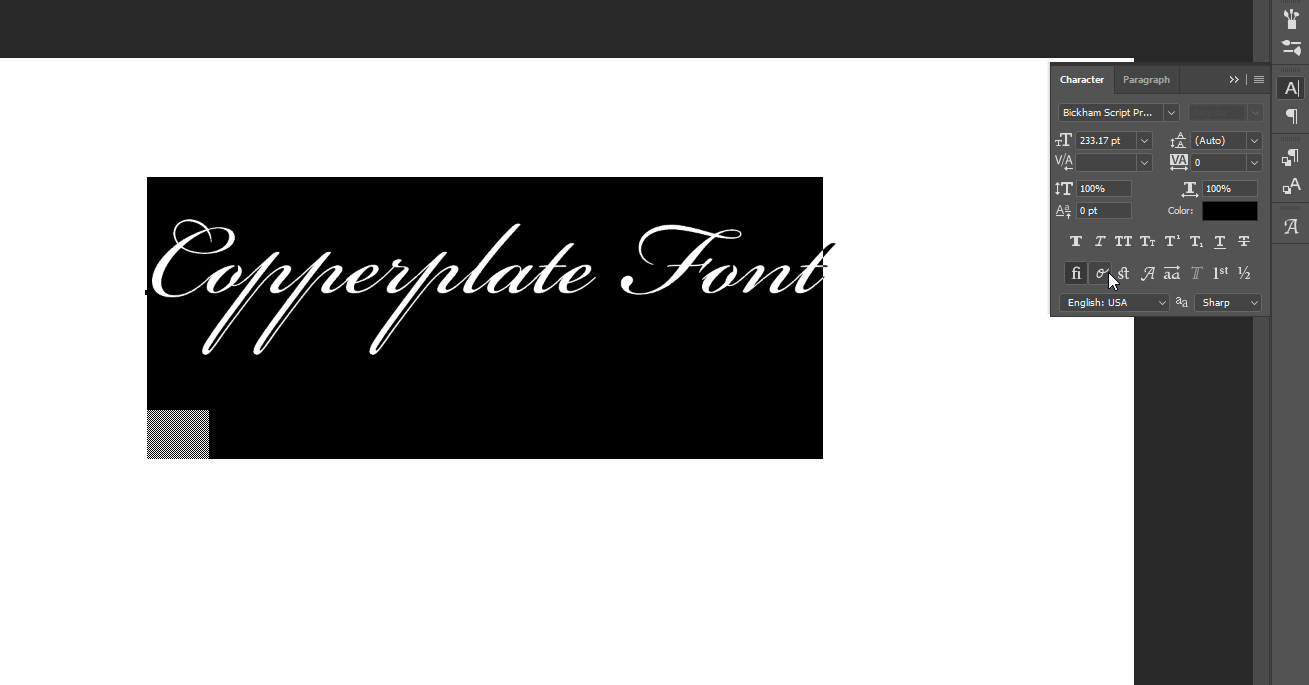
In the image you can see some of the variation a font can have. This is one of those Fonts in the Copperplate style that comes with ligatures, contextual alternatives and swashed or flourished versions of letters. It’s Bickham Script available in Typekit.
While we’re at it – a font is not the same as a typeface, a font is actually just part of a typeface, so one particular set of characters. Back when Type was just blocks of letters, a font would be a specific size and weight of a typeface, nowadays size isn’t that much of an issue, since glyphs are vectors and thus infinitely scaleable. But if you ever downloaded a font family (aka Typeface) you might have gotten a whole set of files. Like different weights or italic version fonts of the typeface.
So whatever you type out is not the same as handwriting. Fonts might offer alternatives and ligatures and some stylized version, but in it’s core, you can only get as creative as the font designer was. When building Letters by hand, there are no limitations. Every version of the letter can look different, you can merge any letter with another one and connect letters that aren’t even next to each other, so type offers basically no flexibility in comparison to the manual creation of letters.
So that’s the main difference between building letters by hand and typing them out. But what is the difference between Hand Lettering and Calligraphy? A very big one.
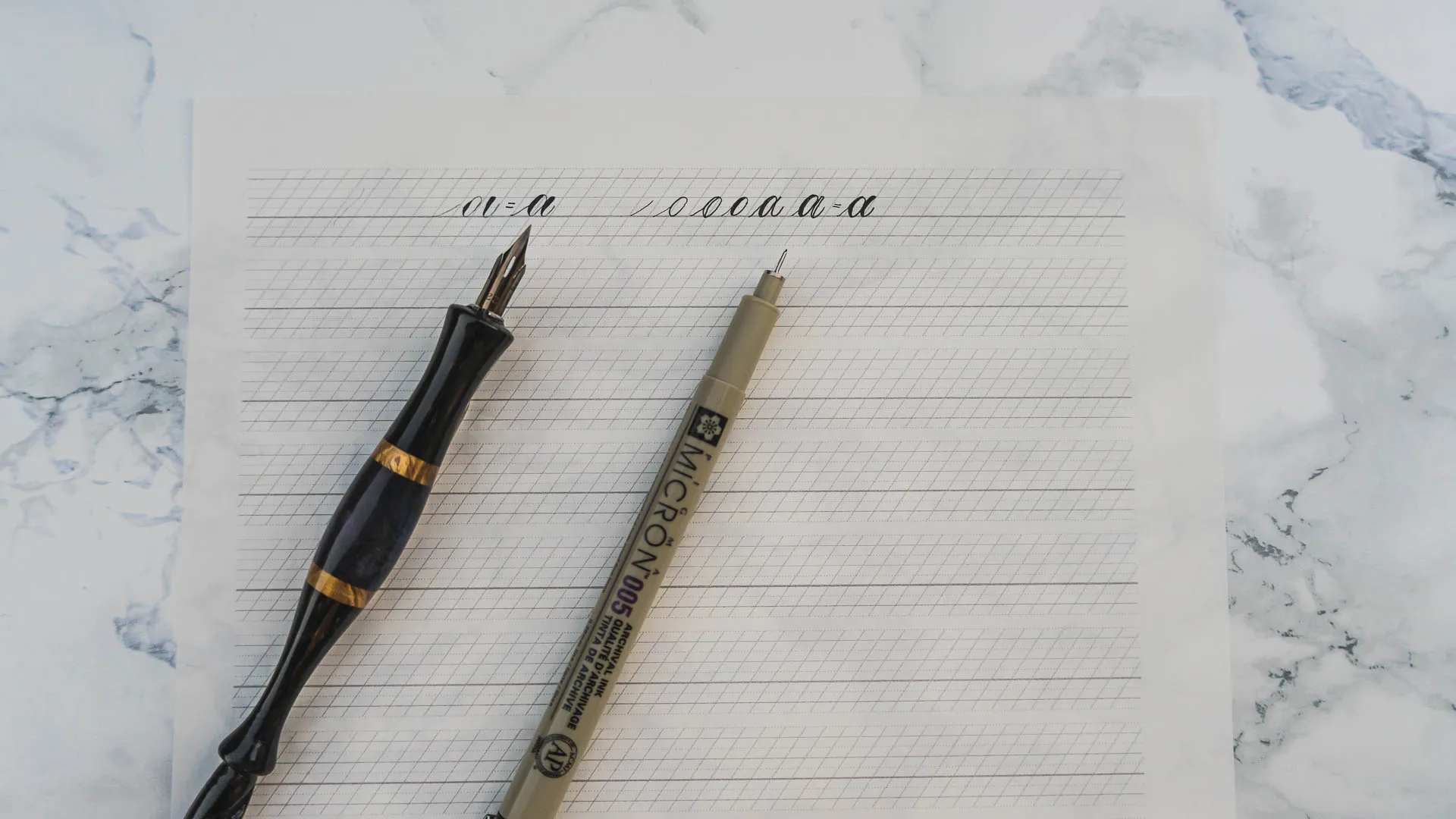
Hand Lettering vs. Calligraphy
Hand Lettering vs. CalligraphySo the difference between Hand Lettering and Calligraphy might not be obvious if you look at an end result, especially if the Lettering Artist is good at emulating Calligraphy. I feel like most of the confusion comes from how similar these terms are.
The word “lettering” is a verb, which describes the act of “making” letters artfully. So often people who do both Hand Lettering and Calligraphy will refer to themselves as Lettering Artists. So basically the term lettering can refer to creating Hand Lettering or Calligraphy.
What we call “Hand Lettering” is the art of drawing Letters.
And then “Calligraphy” by definition is the art of writing letters.
If we go very strictly by this definition what is often called Brushlettering is technically Brush Calligraphy. A very important thing to note is that the tool does not dictate if we are talking about Calligraphy or Hand Lettering, but it can be an indicator.
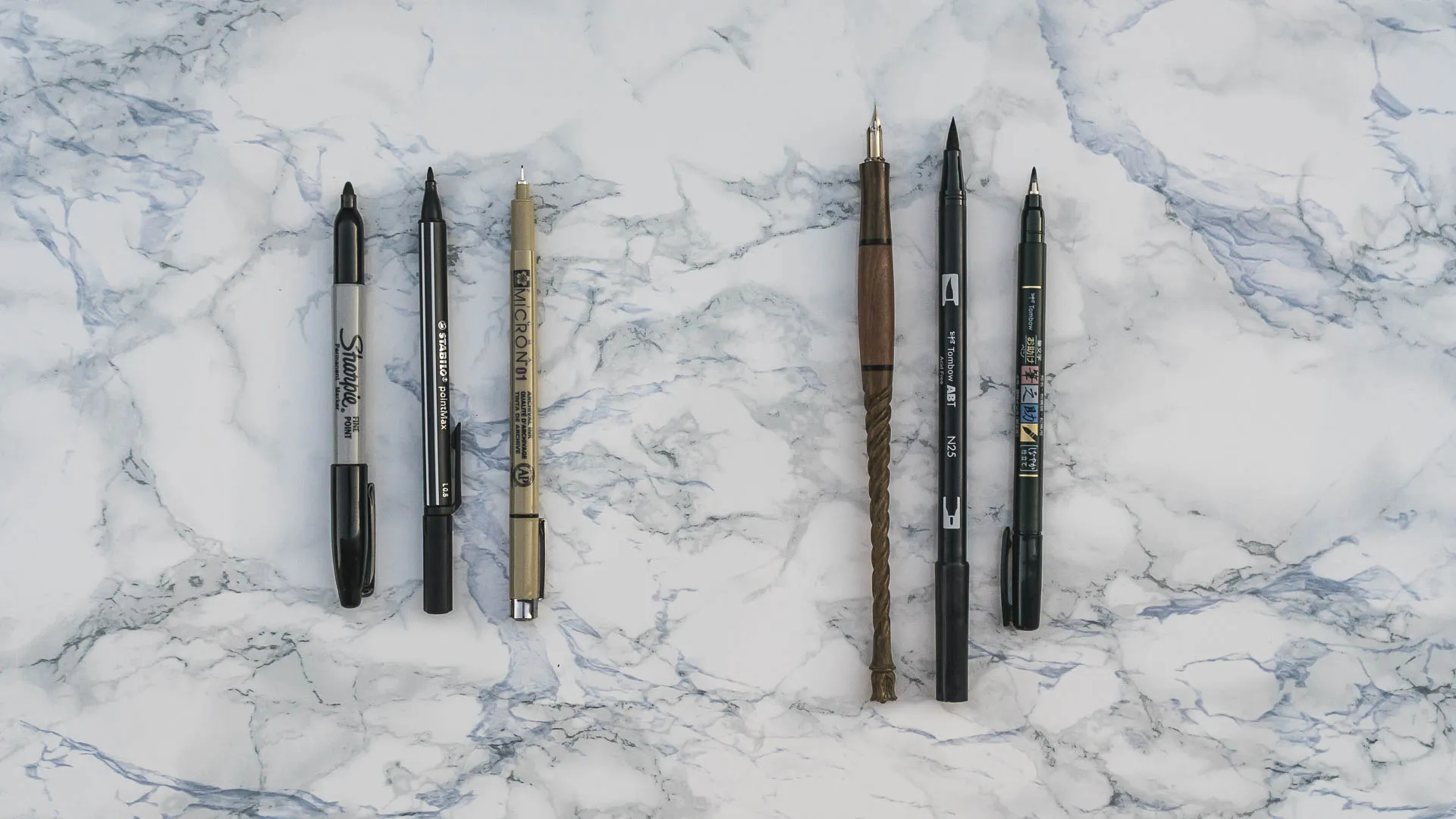
The toolset of a Hand Letterer is usually a lot of pencils, fineliners and markers with bullet tips. If letters have different weights they will usually be drawn in, so being able to produce different weights with one pen isn’t really something a Hand Lettering Artist is concerned about too much.
On the other Hand, a Calligrapher will go for writing instruments that are able to produce the different weights just by applying pressure, since they don’t go back over their lines. It is to note though, that there is such a thing as monoline calligraphy, so contrasting lines are not necessarily key characters of Calligraphy.
What really determines if a piece is Calligraphy or Hand Lettering depends on the process in which it was created. Calligraphy is written, so in the western languages that means a calligraphed piece is created from left to right and (unless there is some flourishing) the writer will not go back into old letters, but create finished version of the letters in one go. A Hand Lettered Piece goes through phases. It really depends on the Artist how these steps are composed, but usually the Hand Lettering process is a lot more iterative within the same piece, a lot of going back, adding weight, correcting lines etc.
Let me try to illustrate this with an example of a Copperplate Style minuscule a.
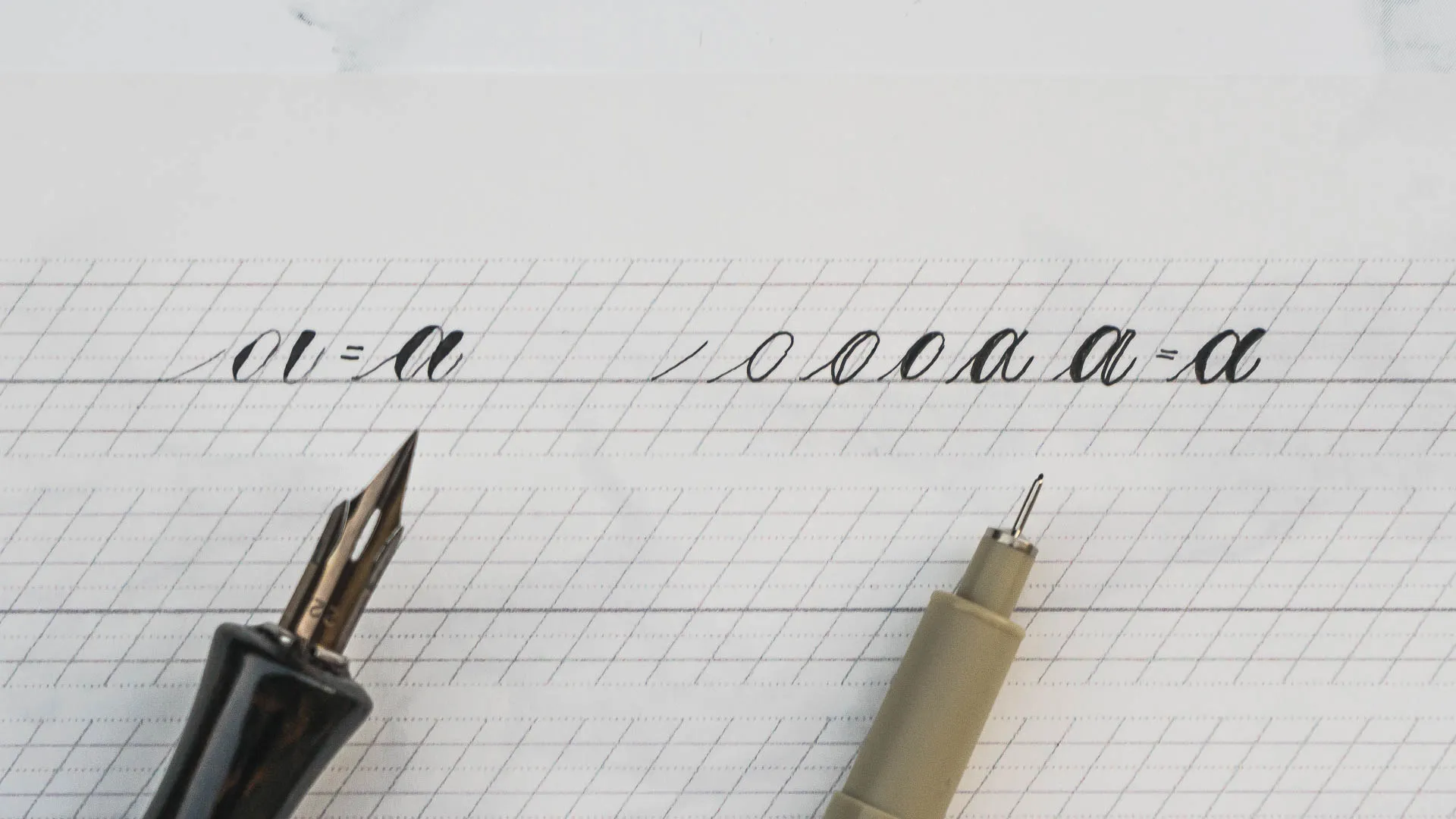
The ductus for this letter in calligraphy is an oval to which an underturn is attached, pressure is applied onto the pen to add weight during the downward motion.
The Handletterer would look at this letter as a circle and a u shape, which he’ll string together, then draw the weight manually and fill the letter in.
It is not uncommon for Letterers to do both Hand Lettering as well as Calligraphy, however I have noticed that most people are not equally good at both and have more of an aptitude for one of them. Which makes sense to me since these are completely different skill sets. As an example I am a lot better at controling my pen pressure than being able to draw two parallel lines, consequently my calligraphy is a lot better than my faux calligraphy (which literally can be defined as Hand Lettering with the goal to create a Calligraphy outcome), because in hand lettering, the weight is added by creating a parallel line to the original outline.
A lot of people say Hand Lettering is easier because you can go back in and fix stuff. I personally wouldn’t say so, it really depends on your skill and your motivation. To talk about myself again - I personally prefer writing out a word 10 times than going back over a draft 10 times to improve it. And I feel like that’s really an important thing to note. A Hand Lettered piece might take a lot more time than a finished calligraphy piece on the piece itself. What many people don’t take into account is that there is a lot Calligraphy practice that you do not see, because the process is so linear and non-correctiing (is that even a word?).
So to answer a question I get often - which one is easier? Which one is better? There is clearly a non-definitive answer to that. It all depends on your personal skillset and your motivation. In the end I feel like Hand Lettering has more application in the real world, because it is a skill required for font making. Since for making a font, a good font, you’ll have to digitize your letters with the pen tool (no image trace is not an option). And even if the original was calligraphy, the pen tool requires you to work in outlines. So being able to have a Hand Letterer’s perspective on letters is very helpful for that process. I personally feel like if you are interested in lettering, you should check out both ways and I recommend to practice both, even if you clearly prefer one of them, because even a Hand Lettering Artist will sometimes start out with a calligraphy version of the Lettering and then use something like tracing paper to improve on that and create the outlines.
What do all of them have in common?
What do all of them have in common?A lot. All of these require the same considerations. How wide are letters, how tall, how far apart, how do they relate to each other, how can we combine them, how to use white space?
Also – none of these things are handwriting, even though some might be handwritten. Thank the English language for that!
(Handwriting refers to writing that has nothing to to with art, its purpose is to make a thought visible with words, not pretty.)
